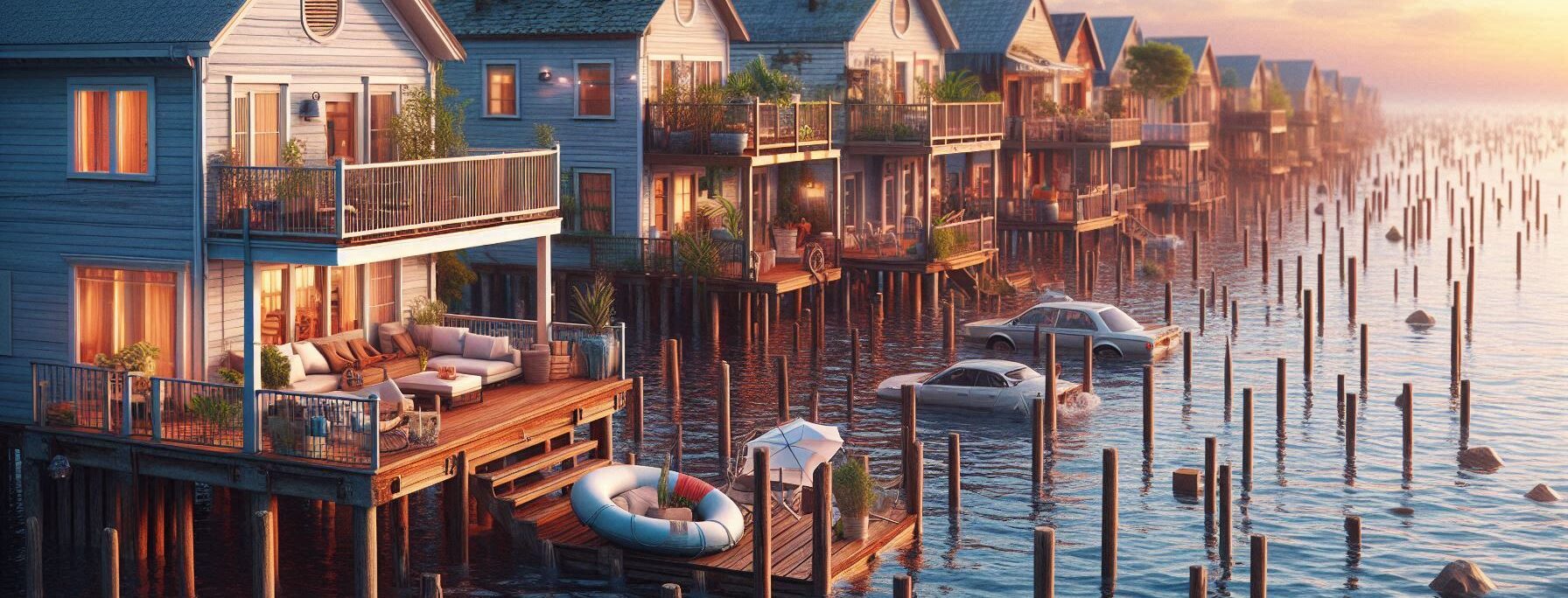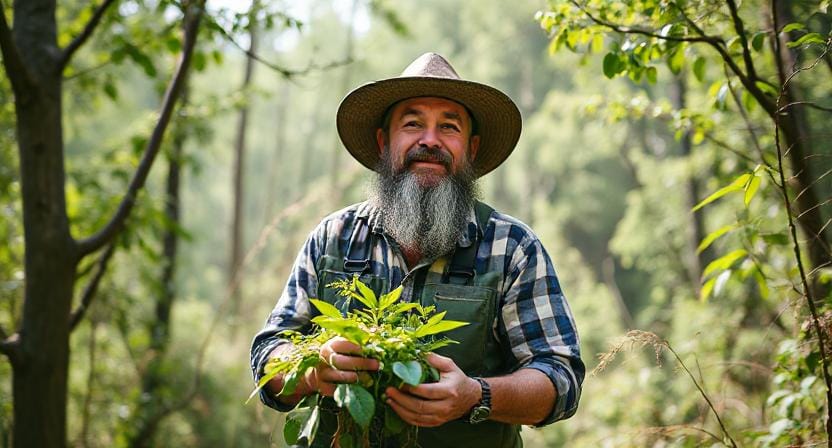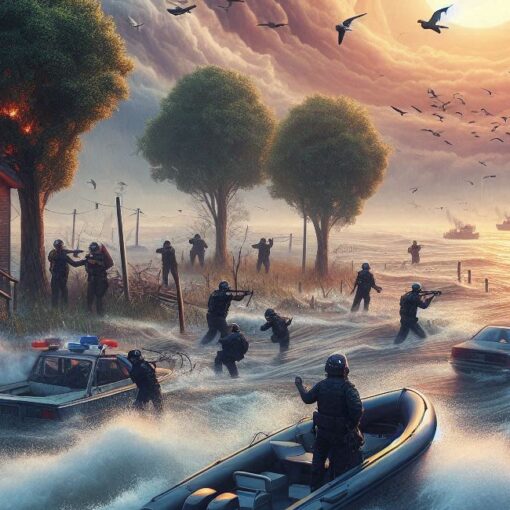Top Takeaways and Key Concepts
- Understand rising sea levels and how melting ice and warmer oceans increase coastal flooding risk.
- Strengthen coastal infrastructure with seawalls, stilts, and restored wetlands for flood protection.
- Prepare for storm surges by creating emergency kits and planning evacuation routes early.
- Build community resilience through local teamwork, shared planning, and communication.
- Adopt sustainable habits to reduce environmental impact and protect coastal ecosystems.
Summary of This Article
Please Note: This post may contain affiliate links. If you click one of them, we may receive a commission at no extra cost to you. As an Amazon Associate, I earn from qualifying purchases.
This article explains how coastal living comes with both beauty and challenges, especially with rising sea levels and stronger storm surges. It highlights the causes of sea-level rise and the need to adapt with smarter infrastructure like seawalls, elevated homes, and restored wetlands. The article also urges individuals and families to prepare emergency kits, evacuation routes, and plans for severe weather events. Community cooperation and resilience play a big role in staying safe, along with sustainable living habits that help reduce long-term environmental damage. Through preparation, teamwork, and a positive spirit, coastal communities can face change with strength—and even a little humor.
Short Video Version of this Article
When you live by the coast, it feels like you’re in a relationship with the ocean. It can be dangerous at times, but it’s also beautiful and fun. You know how it is: one minute you’re watching the waves dance, and the next minute you’re worried about rising sea levels faster than my kids can finish their ice cream on a hot summer day.
What does this entail for people who adore the coast? We have some problems to deal with now. But don’t worry! We can deal with them collectively and still have our sense of humor (and our favorite beach towels).
Imagine being at the beach and feeling the warm sand between your toes. Everything seems perfect since the sun is shining. Then there’s that reminder: the rising water levels might change things. But we can change! We might have to make our sandcastles taller or look for other places to watch the sunset.

Let’s come up with some entertaining and safe ways to keep safe. We should probably buy some floating gear for our backyard barbecues or join local groups that are working on alternatives. Every little bit helps!
Do you remember when we would joke about drinks that spilled or snacks that got sand in them? That same spirit is helpful now too. Let’s keep sharing tales and smiles as we go through these transitions together. Living on the coast isn’t just about the ocean; it’s also about being part of a community and finding happiness even when things are hard.
So grab your towel and your sense of humor, and let’s be ready for whatever comes next!
Understanding Rising Sea Levels

Let’s speak about what makes the water level go up. It’s not just that Mother Nature wants to fill her bathtub a little more. A lot of it has to do with glaciers and ice caps melting. There is also something called thermal expansion. That’s when the water gets warmer and takes up more room.
Remember when you left your Coke outside in the sun? Do you remember how it fizzed over and produced a sticky mess? Now think about that same thing happening in our oceans, but on a much wider scale.
This might be bad news for villages along the shore. Flooding during storms or when the tide is high could happen more often. Picture this: you make sandwiches, snacks, and maybe even cookies for your favorite beach picnic. You’re ready to relax and soak up the sun, but then—whoosh! The tide comes in and ruins your celebration like an unexpected guest! Instead of eating snacks, you’re splashing around to keep your lunch from drifting away.
In a way, it can be humorous, can’t it? But it also tells us how things are getting better. We might need to change the way we think about our beach days and come up with new methods to have fun without getting wet.
Let’s keep talking about this because we all adore spending time by the lake on sunny days. We can work together to make the best of it, even if that means bringing extra towels next time!
Coastal Infrastructure: Time for Reinforcement

Let’s talk about infrastructure now that we know why increasing sea levels are important. A lot of coastal communities were established long before people thought about climate change. It’s like wearing bell-bottoms long after they went out of vogue! The municipalities need to think about how they build things so that they can handle greater tides and storm surges.
This could mean building seawalls or bringing back wetlands. Wetlands are like a blanket of safety for nature. They help keep properties safe from flooding and provide them a little extra protection from the waves. Imagine that instead of just pretty flowers in your yard, you had sandbags all around your house. Those sandbags might appear silly, but they could save you out of a lot of trouble!
Some people might even think about putting their homes on stilts if things get very bad. Picture your residence as a lovely beach bungalow. That would undoubtedly make the area more interesting while keeping everyone safe from flooding.
It’s a little crazy to think of all the adjustments we could have to make, right? But it also demonstrates how imaginative we can be when things get hard. We can do this! Let’s keep talking about what else we can do to be safe and adapt while still enjoying our beautiful coasts.
Preparing for Storm Surges

The ocean sends out storm surges when it storms. The ocean is like saying, “Surprise!” When hurricanes and other big storms hit the coast, they can push a lot of water inland. This isn’t just a little splash; it may cause a lot of floods.
So, what do we need to do to get ready? First of all, it’s a great idea to have an emergency pack. You should bring a lot of water bottles to stay hydrated. And food, too, since who doesn’t like eating chips during a storm? You may also add some cookies or granola bars to the mix. And don’t forget about board games! While you wait for the storm to pass, they keep everyone busy.
Second, it’s important to know how to leave your location. Don’t wait until you’re knee-deep in ocean to figure out where to go! That would be a little too late, wouldn’t it? Look at maps ahead of time and make sure everyone knows how to get out.
Thinking about all of this can be scary, but being ready makes a big difference. You can do it! We just need to keep cool and make some plans. Let’s start talking about what more we can do to get ready for those surprise waves from Mother Nature!
Community Resilience: Working Together

It’s nice that we don’t have to deal with rising sea levels on our own. It takes a whole village! People in different communities can work together to come up with ways to deal with the problems that climate change brings to our area.
Picture meetings in the community where everyone expresses their thoughts. People bring ideas on how to keep safe and prepared instead of dessert, like at a potluck dinner. Everyone has something important to say.
Local governments can help out, too. They can pay for research and new technologies that help them keep track of changes in sea level. This manner, kids can be ready for anything can happen in the future. If they could make “flood-proof” shoes, I’d be the first in line! How nice would it be to play in the water without worrying about getting your socks wet?
We are stronger when we work together. We can help each other through tough times by sharing suggestions, information, and even laughing. Also, it’s nice to know that your neighbors are looking out for each other. So let’s keep talking about how we can help each other be ready for and get through all of this!
Embracing Sustainable Practices

It takes a team to fight rising sea levels. Using eco-friendly methods is something we can all do to help. It feels like you’re hugging the Earth! Little things you do at home might have a significant effect. Do you turn off the lights when you leave a room? That’s a simple win! It saves energy and keeps bills down, which is nice.
It’s really good to support local groups that are trying to safeguard the environment. Think about it: when we aid our coasts, we also stop erosion and make sure that plants and animals may live and grow. Every single thing you do matters!
Another fantastic method to help is to recycle. Choosing reusable bags instead of plastic ones is a great way to help keep our beaches clean and beautiful. We all like to walk on soft beach without seeing rubbish all over the place.
Let’s tell our family and friends about these thoughts. We’ll have a bigger effect together if more people join up! Over time, even minor adjustments build up. So let’s keep doing our best for the Earth, step by step.
Finding Humor in Hard Times
Isn’t laughter really the best medicine? It’s natural to feel overwhelmed when things are hard because of rising sea levels. But don’t forget to have fun in the mess. I mean, who wants to cry on their wet beach towels? Not me!
Remember those humorous stories we’ve heard? You know, the ones where people get into funny circumstances but yet make it through? They often joke about what’s going on. It makes us feel better and reminds us that we’re all in this together.
Take a deep breath the next time you start to worry about how high the waves might go or if your favorite beach site could become a swimming pool. Life is funny because you never know what’s going to happen. Instead of freaking out, picture yourself floating on an inflatable flamingo.
Finding something funny makes everything a little easier to deal with. Let’s have some fun as we work things out together. We’ll face these problems head-on and stay positive, one laugh at a time!
Frequently Asked Questions
1. What causes sea levels to rise in coastal areas?
Sea levels rise mainly due to melting glaciers and ice caps, as well as thermal expansion—when warmer ocean water expands and takes up more space, leading to higher tides and frequent coastal flooding.
2. How can homeowners protect their property from flooding?
Homeowners can build seawalls, elevate their homes on stilts, install flood barriers, and restore natural defenses like wetlands and dunes to reduce flood risk and storm damage.
3. What should be in a storm surge emergency kit?
An emergency kit should include bottled water, non-perishable food, flashlights, medications, radios, extra batteries, important documents, and comfort items to stay safe and calm during severe coastal storms.
4. Why is community cooperation important for coastal resilience?
Working together helps communities share resources, plan evacuations, build stronger defenses, and support one another during storms or flooding—creating a safer environment for everyone.
5. What role do wetlands and natural barriers play in coastal protection?
Wetlands act like natural sponges, absorbing storm surge water and reducing erosion. They also provide habitats for wildlife and help protect coastal communities from flooding.
6. How can individuals help fight coastal erosion and climate change?
People can reduce energy use, recycle, plant native vegetation, support eco-friendly local policies, and choose reusable products to protect coastlines and lower environmental impact.
7. How do humor and positivity help during climate challenges?
Staying positive helps reduce stress and keeps communities united. Humor makes difficult situations easier to handle and reminds people to stay hopeful while working toward long-term solutions.
Suggested Resources:
National Oceanic and Atmospheric Administration
https://www.noaa.gov/education/resource-collections/ocean-coasts
The Nature Conservancy – Climate Change Adaptation
https://www.nature.org/en-us/what-we-do/our-work/climate-change/adaptation/
U.S. Geological Survey – Sea-Level Rise
https://www.usgs.gov/special-topic/water-science-school/science/sea-level-rise

Kevin Collier is a seasoned outdoor enthusiast and writer for Trekbug.com, specializing in outdoor adventures, survival strategies, and prepping insights. With a deep love for nature and a commitment to self-sufficiency, Kevin empowers readers to embrace the wilderness confidently. He shares valuable tips, practical techniques, and inspiring stories, helping both novice and experienced adventurers develop essential skills for surviving and thriving in the great outdoors.





